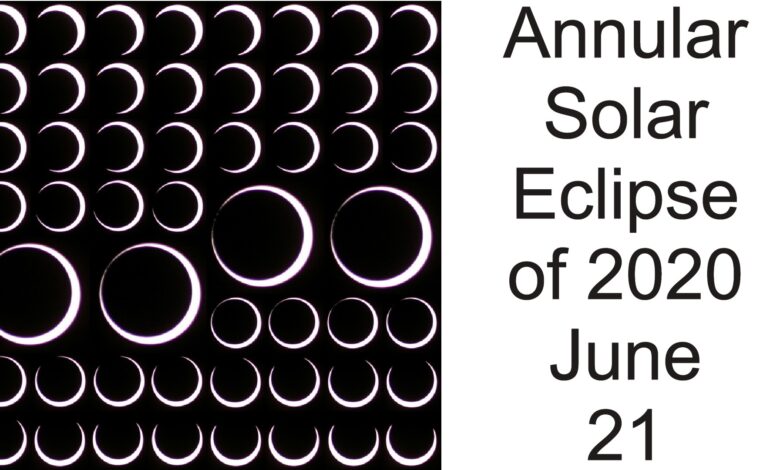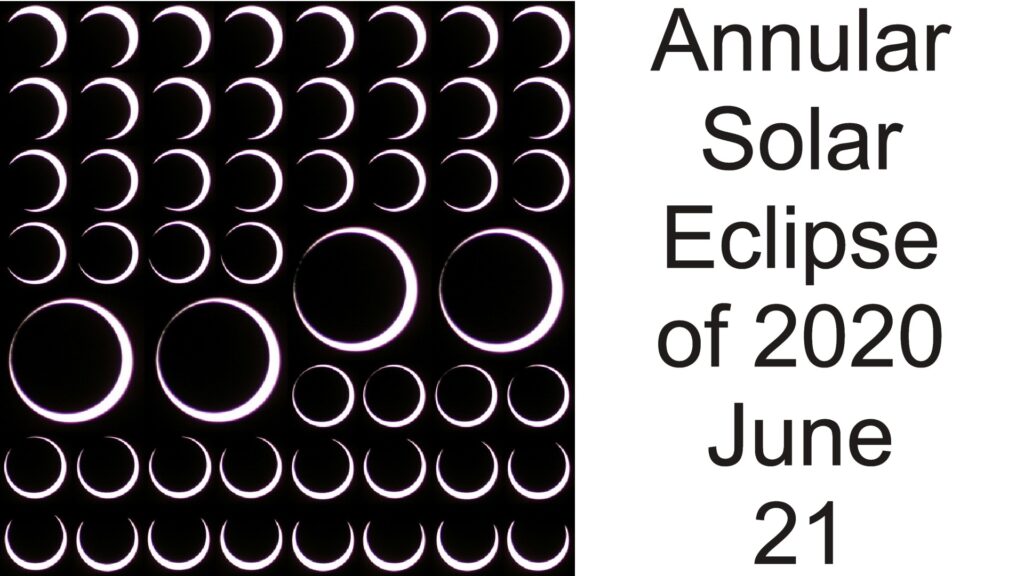Annular Eclipse of the Sun- 21 June, 2020, Sunday- 31 Jyaishtha, 1942 Saka Era- (Annular Phase is visible in India)

An annular solar eclipse will occur on 21 June, 2020 (31 Jyaishtha, 1942 Saka Era). From India annular phase will be visible in the morning from some places within a narrow corridor of northern part of the country (parts of Rajasthan, Haryana and Uttarakhand) and it will be seen as partial solar eclipse from the rest part of the country. Few prominent places within this narrow annularity path are Dehradun, Kurukshetra, Chamoli, Joshimath, Sirsa, Suratgarh etc. In India, the obscuration of the Sun by the Moon at the time of greatest phase of the annular eclipse will be nearly 98.6%. Obscuration of the Sun by the Moon at the time of greatest phase of partial eclipse will be around 94 percent in Delhi, 80 percent in Guwahati, 78 percent in Patna, 75 percent in Silchar, 66 percent in Kolkata, 62 percent in Mumbai, 37 percent in Bangalore, 34 percent in Chennai, 28 percent in Port Blair etc.
Considering the Earth as a whole the partial phase of the eclipse will begin at 9 h 16 m IST. The annular phase will begin at 10 h 19 m IST. The annular phase will end at 14 h 02 m IST. The partial phase will end at 15h 04 m IST.
The annular path passes through Congo, Sudan, Ethiopia, Yemen, Saudi Arabia, Oman, Pakistan, northern parts of India and China. The Moon’s penumbral shadow produces a partial eclipse, visible in the region covering Africa (except W. and S. parts) S. E. Europe, Asia (except N. and E. Russia) and northern parts of Australia.
A solar eclipse occurs on a new moon day when the Moon comes in between the Earth and the Sun and when all the three objects are aligned. An annular solar eclipse will occur when the angular diameter of the Moon falls short of that of the Sun so that it cannot cover up the latter completely. As a result a ring of the Sun’s disk remains visible around the Moon.
Eclipsed Sun should not be viewed with the naked eye, even for a very short time. It will cause permanent damage of the eyes leading to blindness even when the moon covers most portion of the Sun. Safe technique to observe the solar eclipse is either by using proper filter like aluminized Mylar, black polymer, welding glass of shade number 14 or by making projection of Sun’s image on a white board by telescope.





